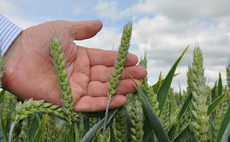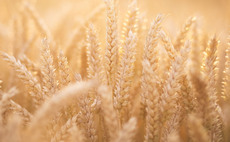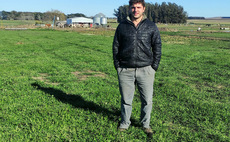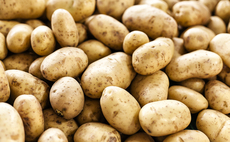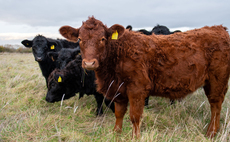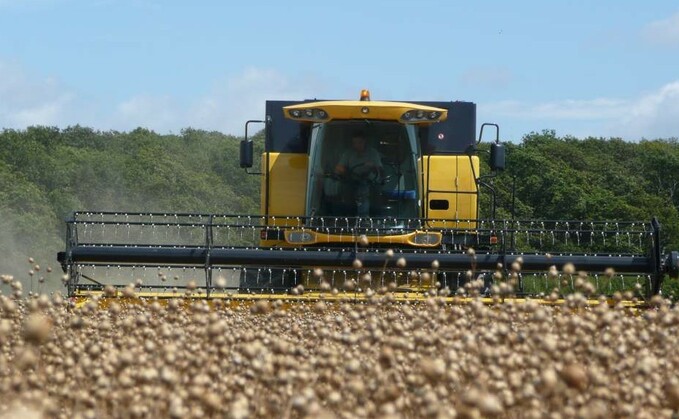
The use of linseed as a spring break crop is increasingly on the agenda for many growers, but further reassurance is needed about managing and harvesting it.
This is according to recent research conducted by Arable Farming on behalf of Premium Crops looking at spring break crops grown for harvest 2020, and attitudes and intentions towards crops for harvest 2021.
Nigel Padbury, seeds and marketing manager for Premium Crops says: "The profile of linseed as a possible spring break crop remains high but there are clearly concerns which prevent some growers from using it.
I suspect these attitudes date back perhaps 20 years when the main reason for growing linseed was subsidy and harvesting was left until November.
"We have lots of farmers who are successfully growing the crop now and timing the harvest in a way which eliminates all the problems.
We also have a wealth of expertise we can use to advise growers and agronomists on successful establishment and management.
These issues are no longer a barrier to growing either spring or winter linseed."
New Research
The research was undertaken in October (2020) among 136 arable farmers across the UK.
As well as representing all regions in England and countries in the UK, most of those interviewed had been farming for more than a decade (90%) and 70% for more than 20 years.
The survey covered a good range of farm sizes, with 39% between 100 and 299 hectares, and 38% in the 400-1,000+ hectares range.
Enhanced yield
As with research conducted earlier this year looking at winter break crops and also commissioned by Premium Crops, respondents were asked to rank the reasons they grew break crops by importance.
Unsurprisingly, the picture is similar to the winter survey with large numbers of respondents rating enhanced yield of subsequent crops and control of weeds as their most important reasons.
In fact, 56% of those interviewed rated enhanced yield of subsequent crops as the most important or second most important reason for growing break crops, while 51% put the control of weeds in these categories.
However, the value of the crop still remains an important factor and was rated first or second in importance by 42% of the sample.
Mr Padbury says: "This has provided a useful insight into the thinking of growers.
Of course, we want to promote the value of the crop itself, which is certainly a useful addition to farmers' incomes.
However, the effect on subsequent crops and the control of weeds is a top priority for many growers.
There is a monetary value to these things and a greater understanding of this will help us promote the use of crops such as linseed.
"You cannot have a first wheat without a break crop and choosing a break crop which improves your yields makes perfect sense.
Past evidence suggests wheat following linseed is at least as good if not better than wheat following oilseed rape.
In fact, we believe linseed delivers a better performance when it comes to the reduction of slugs at establishment." In the research conducted in May into winter break crops, around a quarter of those questioned (27%) identified weed control as the most important benefit of break crops.
For the spring break crops this figure increased to nearly a third (32%).
Mr Padbury says: "This is what we would expect to see given the importance of controlling black-grass in particular."
Reduced spring break crop
Looking at planting intentions for harvest 2021, just over one-third of the sample (37%) indicated they would be reducing the area dedicated to spring break crops.
For most of these growers (66%), this was as a result of an increased area of autumn sown crops in 2020.
However, 92% of the respondents still planned to plant spring break crops, with the most popular crops being spring beans (33%) and spring peas (22%).
These were closely followed by maize (20%) and sugar beet (15%).
One in 10 of those questioned said they planned to plant spring linseed.
Although the survey conducted in May concentrated on winter break crops, it did ask about intentions towards spring crops and the percentage favouring linseed does show a small increase from that survey, up from 7% to 10%.

This year he grew a crop of Sideral winter linseed which was harvested on July 24 and moved off-farm of August 2.
He says: "It was the easiest linseed I have cut to date.
Winter linseed is staying in the rotation and we have the new variety Attila going in this autumn."
Healthy outlook for linseed
Healthy outlook for linseed
Nigel says: "In the context of the other spring crops mentioned, this looks like a pretty healthy outlook for linseed.
It is increasingly being considered as an option by many growers and this continues the trend from our research earlier in the year.
We also asked respondents if they would consider growing spring linseed.
In addition to those currently growing the crop, a further 43% said they would or might consider it." While the largest number of growers (39%) questioned intended to only plant one spring break crop, about 24% of the sample intended to grow two (15%) or even three (9%) crops.
Combinations of spring beans with peas were particularly favoured, but combinations with spring linseed included maize, peas and beans.
These figures support Mr Padbury's view that linseed is often used as a crop to increase the diversity of cropping across the farm.
Although the value of the break crop was not rated its most important factor by growers, its value scored slightly higher - 32% versus 26% - than enhancing the yield of subsequent crops when it came to choosing the largest area of break crops.
Respondents were asked whether their spring break crops for 2020 had achieved what they wanted from them.
Most (65%) said they had, or that they had mostly achieved what they wanted.
However, when asked where their break crops had fallen short, value of the crop was by far the biggest response, accounting for 42% of the sample.
Lack of knowledge
While there has been an encouraging number of growers now considering spring linseed, Mr Padbury admits lack of knowledge about the crop and concerns over harvesting remain a barrier.
He says: "It was disappointing to see these factors quoted as the main reasons for not deciding to grow spring linseed.
"I suspect the issues over harvest are a leftover from the days when it was not harvested until November.
There is plenty of information out there about how to grow it successfully and how to manage harvest dates and we are very happy to advise any interested growers."







